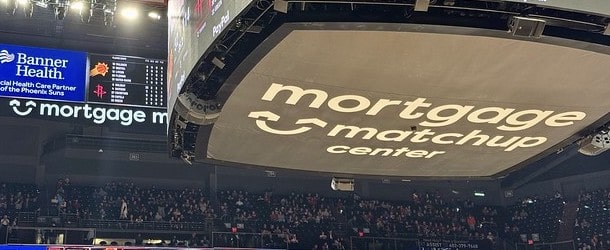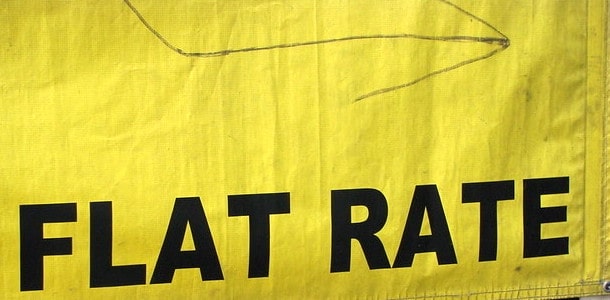
In the second quarter of 2020, the U.S. housing market hit an all-time high of $32.8 trillion, per The Federal Reserve’s Flow of Funds Report, as referenced in the latest Monthly Chartbook from the Urban Institute.
That was up from roughly $32.4 trillion in the first quarter of 2020, thanks to an increase in home equity from $21.1 trillion to $21.5 trillion.
Meanwhile, outstanding mortgage debt remained steady at $11.3 trillion, which tells us most borrowers are paying down existing mortgages and/or applying for rate and term refinances to lower monthly payments.
And that’s a good thing because it means most homeowners aren’t overleveraged like they were back in 2006, before the housing crisis ushered in the Great Recession.
Looking at it a different way, American homeowners have a collective loan-to-value ratio (LTV) of about 34%.
The Housing Market Appears to Be Healthy Despite Record Home Prices
- U.S. property values continue to rise as mortgage debt keeps falling
- American homeowners have a collective loan-to-value ratio (LTV) of about 34%
- Mortgage debt is essentially unchanged from 2006 while home values have risen nearly $8 trillion
- This means today’s homeowners are in good shape overall, but it’s harder for new buyers to enter the market
While one could always express caution when prices hit all-time highs, you’ve got to consider more than just the price.
More important is to look at housing affordability and the debt held by existing homeowners.
Fortunately, U.S. homeowners only carry a collective $11.3 trillion in mortgage debt, which appears to be flat or even lower than total housing debt back in 2006.
There are several reasons why today’s homeowners are carrying a lot less mortgage debt. For one, most haven’t tapped their equity.
Very few homeowners these days have applied for cash out refinances or pulled equity via home equity line of credit or home equity loan.
Instead, they’ve been paying down their home loans each month, enjoying tailwinds propelled by record low mortgage rates.
Simply put, homeowners owe less and pay more in principal with each monthly payment, creating a housing market that is less leveraged.
This is a good thing for individual households and for the housing market as a whole because it means borrowers aren’t overextended, and have options if they’re unable to keep up with monthly payments.
A decade ago, mortgage payments often weren’t affordable because of so-called exploding ARMs that reset much higher after the borrower enjoyed an initial teaser rate.
And because they didn’t have any skin in the game, aka home equity, they couldn’t refinance to seek out payment relief.
That led to a flood of short sales and foreclosures, and eventually the creation of widespread loan modification programs such as HAMP and HARP.
Today, even if a homeowner falls behind due to COVID-19 or another setback, they could potentially sell for a tidy profit and move on.
This protects both that individual and their local housing market, which might otherwise suffer from declining property values due to the presence of distressed home sales.
In summary, this is why today’s housing market is very different than the one we experienced more than a decade ago, despite some economists seeing home prices in “bubble territory.”
But What About Housing Affordability Today?
- Mortgage affordability has actually improved in recent years despite surging home prices
- Existing homeowners typically spent 17.5% of household income on their monthly housing payments in September, down from 19.6% two years ago
- Low mortgage rates are improving affordability, but rising down payments are hurting prospective buyers
- Property values have grown at 2X rate of incomes over the past six years, and typical U.S. home now worth 3.08 times median homeowner household income
It’s great that existing homeowners are enjoying record low mortgage rates and equally affordable housing payments, but what about prospective home buyers?
Well, housing affordability has actually improved since 2018 due to the ultra-low mortgage rates available, per a new analysis from Zillow.
This is despite the fact that home values have grown at about double the rate of incomes over the past six years.
While households typically spent just 17.5% of income on monthly housing payments in September, down from 19.6% two years earlier, the typical U.S. property is now worth 3.08 times median homeowner household income, an all-time high per Zillow.
In other words, monthly payments are cheap for existing homeowners, but their properties are valued well above their incomes.
They remain affordable because many of these homeowners have small mortgage balances and super low mortgage rates.
But if these same folks were to buy their homes today, it might not work out, which brings us to those prospective buyers, or Gen Z home buyers.
Zillow noted that home values have increased a whopping 38.3% since September 2014, while homeowner incomes have gone up just 18.8% over the same period.
If a home buyer puts down 20% on a median-priced property they would have only needed about $36,600 at the start of 2014, or 6.4 months of income for a median homeowner household.
Today, they’d need a $52,000 down payment, which is 7.5 months of income for that 20% down payment to avoid PMI and obtain a more favorable interest rate.
Even worse for those still renting, Zillow expects home prices to rise a further 7% over the next year, which would increase that required down payment another $3,600 to about $55,600.
This is essentially going to steer more new home buyers into low down payment mortgages, such as FHA loans that only require 3.5% down, or Fannie Mae HomeReady and its mere 3% down requirement.
While it at least gives them an option, they’re going to have higher mortgage payments as a result, due to a larger loan amount, higher mortgage rate, and compulsory mortgage insurance.
Additionally, they’ll have very little skin in the game, which could present a problem if home prices take a turn for the worse, as they did a decade ago.
The good news is the bulk of homeowners are sitting pretty on mounds of equity, so assuming cash out refis don’t become the next big thing, the overall housing market should be relatively safe.
Could Existing Homeowners Afford to Buy Their Properties at Today’s Prices?
One last thing. We’ve basically got this weird situation where a lot of existing homeowners probably wouldn’t be able to afford their same properties if they were to purchase them today.
However, they’ve got a ton of home equity that is only growing each month thanks to regular payments of principal and rising home prices, meaning more money is essentially locked in their properties.
At the same time, it makes a move difficult because even a lateral purchase would be pricey from an affordability standpoint when you factor in stagnant incomes and higher property taxes.
Or the fact that some of these owners are retired or not making peak income.
In the end, it further exacerbates an already difficult situation in terms of housing inventory, which has been on the record low end of things for quite a while.
That just points to even higher home prices and lots of equity accrual, which buffers the housing market, but makes it increasingly difficult for new homeowners to get into the game.



